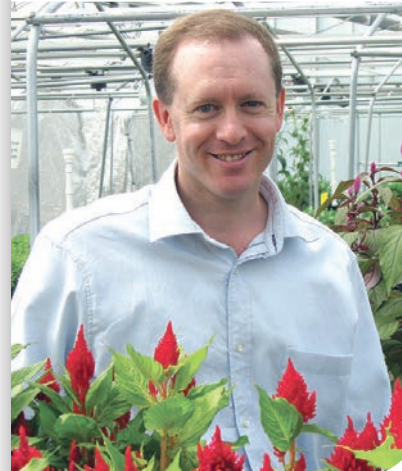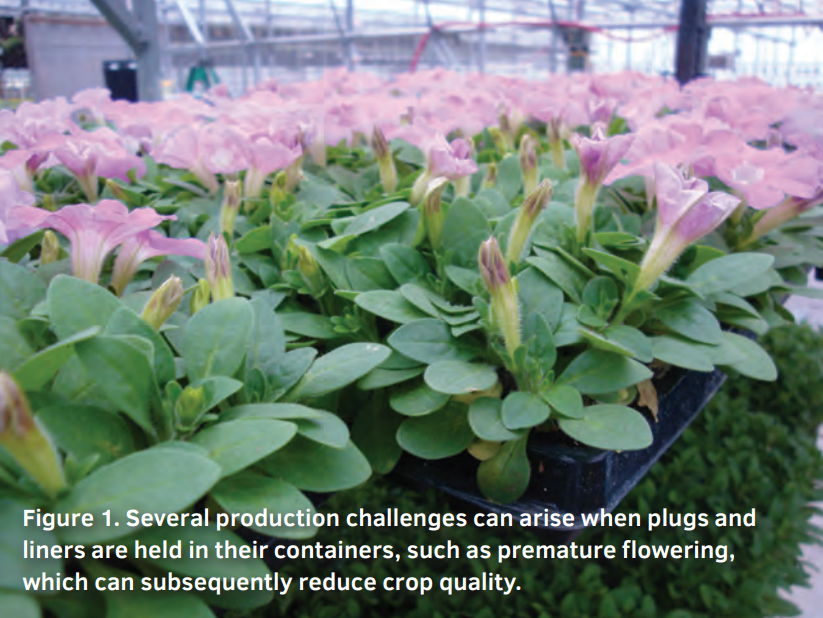
How to produce poor-quality floriculture crops
DOWNLOADSeptember 11, 2020 - Erik Runkle
technically speaking by Erik Runkle
How to Produce Poor-Quality Floriculture Crops
Of course, no one actually intends to produce floriculture crops that are of poor quality. However, sometimes growers unknowingly follow practices that can contribute to, or directly cause, a reduction in crop quality. While there are some tradeoffs between crop quality and crop timing and/or input costs, the practices below should be avoided whenever possible.
Hold plants over from last year It may be tempting to keep plants that didn’t sell, and hold them over until the next year. This is usually not a good idea; plants may become infested with insect pests (increasing the potential for virus transmission), the pH may drift, and plant vigor could decrease. These plants also take continued maintenance and a favorable environment, costing money just to keep the plants alive. Once the marketing window has closed, cut your losses and dump the plants.
Let weeds proliferate. By keeping weeds in pots, under benches, or along the edges of your greenhouse, you’re allowing them to produce seeds that get into your floriculture crops. They also compete with the planted crop for light, water, and nutrients, and also harbor insect pests. Cover bare soil in and around the greenhouse, and routinely remove weed.
Don’t clean your greenhouse. Plant debris, algae, excessive substrate and other organic materials are great places for plant pathogens and insect pests to proliferate. I find that there is a strong correlation between the cleanliness of a greenhouse and the quality of the crop produce.
Don’t scout for insects. Growers should use sticky cards and routinely (e.g., weekly) check them to monitor pest populations. Without scouting, it can be difficult to identify insect pressure until it is already a big problem, which usually necessitates greater application of pesticides. Scouting is a proactive, not reactive, way to control insect pests.
Ignore your ventilation system. For many (but not all) floriculture crops, plant quality decreases as temperature increases. Insufficient venting (inoperable roof vents) and poorly maintained exhaust fans allow the greenhouse temperature to rise excessively in the spring and summer. In addition, when it is cold outside, fan louvres and vents that do not properly close allow the warm air inside to escape, which can increase your fuel bill.
Don’t maintain HAF fans. Horizontal air flow (HAF) fans improve the uniformity of the air (temperature, humidity and carbon dioxide concentration). Obviously a fan that doesn’t work doesn’t serve its function. In addition, fans pointed downward or upward don’t mix the air as intended, which can create uneven drying conditions of the crop.
Limit light levels during the winter. The quality of many crops increases with light intensity. To improve crop quality, remove whitewash in the fall; don’t hang baskets above a crop until at least March; limit any other overhead obstructions; use supplemental lighting from October through March; and re-skin poly greenhouses when they reach their intended lifetime.

Increase plant density. Plants have a “shadeavoidance response” in which their growth is influenced by perception of their neighbors. As competition for light increases (at a higher planting density), extension growth of stems, leaves, and petioles increases. When plants are widely spaced, they are able to harvest more light on a per-plant basis and, in response, branch number increases, stems get thicker and stems elongate less. Of course, trade-offs with wide spacing, such as greater allocation of overhead per plant, and less production output, also need to be considered.
Delay transplanting. Plugs and liners are ready for transplant once they have a sufficient root system to easily be removed from trays with the substrate intact. If they remain in their trays longer than intended, several challenges can arise: the substrate pH can start to drift, plants may initiate flowers prematurely, and plant vigor can decrease (Figure 1).
Let foliage stay wet. The likelihood of spore germination and leaf penetration increases as plant leaves stay wet. Therefore, avoid watering plants after mid-afternoon so that foliage is dry by sunset.
Don’t monitor the pH or EC. One of the most common production challenges is to maintain desirable fertility and substrate pH. Both should be measured routinely (e.g., weekly) with calibrated sensors. Charting these over time can inform the grower as to whether feed is too high or low, or the pH is drifting out of range. This information enables growers to make corrective actions before symptoms become apparent.



 Print
Print Email
Email






